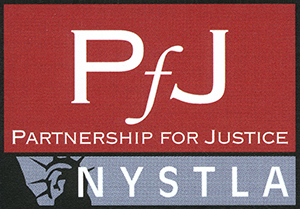Medical Malpractice Case

Sometimes medical negligence, or a deviation from the standard of care, has occurred, but there are no resulting damages to the patient. There could also be a situation wherein a doctor or health care provider did not depart from a standard of care, but there were serious resulting medical complications. In other words, physical injuries may be a natural complication of a procedure, and not necessarily the fault of the doctor or health care provider.
Whether a medical malpractice case is viable comes down to whether or not it can be shown that a doctor or health care provider deviated from a level of care that a reasonable doctor or health care provider would have delivered under the same set of circumstances. It is equally critical for the plaintiff to prove that the deviation by the defendant caused the damages for which they are seeking compensation.
Attorney as Detective: Building a Strong Case
In building a strong medical malpractice case, there are at least four essential roles of the attorney.
- Completing the Medical Record Puzzle
It is critical for the attorney to obtain the client’s complete medical record as soon as possible. This requires obtaining from the client medical record authorizations under the Health Insurance Portability and Accountability Act of 1996 (HIPAA) in order to retrieve all of the pertinent medical records. This means a good portion of the client’s entire medical history—not just the portion related to the medical negligence issue at hand. This includes obtaining all prior treatment records, diagnostic films and reports (e.g., X-rays, MRI scans, CT scans, mammograms, consultations, physical exams, lab results, etc.).
This is important because the attorney must identify whether the client had any known pre-existing medical conditions that could have been the cause of, or contributed to, the client’s medical issues. The attorney must rule out the possibility that the injury was caused by something that occurred in the client’s past medical history, unrelated to medical malpractice.
The attorney must prepare a timeline of both medical and non-medical events. This is done during a thorough interview with the client and other witnesses, as well as a careful evaluation of the medical records. The attorney should constantly add to the timeline as more medical information becomes available. I use an application called TimeLine Presenter by TimeLine Systems AS that integrates the client’s medical records into a state-of-the-art timeline with graphics that can later be used at trial. Clients should be diligent in updating their lawyer on their current medical treatment and tests. The lawyer should regularly check in with the client and the client’s health care providers to make sure the lawyer has all updated medical information.
Next, the attorney must secure a medical expert, or experts, in the relevant and associated medical field(s) to review the record in its entirety, and render an opinion with respect to whether or not the doctor, hospital, medical facility, nurse, or any other health care provider violated the standard of care. There are services like The Expert Institute that can recommend excellent, qualified and trustworthy physician experts to review the medical records in your case and determine whether your case has merit.
- The Interviewing Process
To obtain as much information about the case and to identify potential witnesses, the attorney must interview the client, their family members, and anyone else who was present at the time of the alleged negligence, who could serve as a witness to the liability (i.e., the medical negligence) on the part of health care providers.
Interviewing family members, friends, and co-workers is also valuable to identify each element of damages suffered by the client. For instance, the client’s family and friends might be able to make a statement about their observations of how the injuries affect your client’s ability to perform their daily activities, changes in their behavior or persona, any physical limitations or restrictions, as well as any pain and suffering that they may have witnessed the client endure.
- A Thorough Investigation
One of the most important steps for the attorney in investigating a medical malpractice claim is determining whether the potential defendants are municipal or private entities, as this will dictate the statute of limitations that applies to the case.
This requires a thorough investigation into all potential responsible parties. For instance, did the radiologist provide an inaccurate reading of the CT scan to the physician, who then relied on the erroneous reading thereby causing the negligent care? What about a case where a patient never received the proper medication after major surgery and suffered severe complications as a result? Did the physician negligently fail to order the medication? Or did the recovery room nurse fail to carry out the doctor’s orders? Answering these types of questions requires a high level of investigative work and close attention to detail, but it is absolutely essential to building a successful case.
- Dissecting the Damages
Another critical task for the attorney is to determine the nature and extent of the client’s damages, as this will determine, in large part, the value of the case and what is a reasonable amount needed to fully compensate the client. To determine the full nature and extent of the client’s damages, information must be gathered concerning lost wages and lost income, medical bills and expenses, and pain and suffering. In almost all cases, a calculation of the client’s lost wages and future earnings will require the analysis of an economic expert.
Any and all harms and costs associated with the medical negligence must be identified and scrutinized in order to maximize adequate compensation for the client, including home care needs, home modifications, required medical devices, and physical therapy.
For more information on Proving A Medical Malpractice Case In NY, an initial consultation is your best next step. Get the information and legal answers you’re seeking by calling (646) 828 1980. Call Oddo & Babat, P.C. today.


 I consulted with David the first time a couple of years ago on a serious matter that affected a very close member of my family. Not expecting a good experience from this serious situation coupled with an attorney consultation, the entire thing surprised me as it was pleasant, professional, and completely successful. We found him clear, direct, generous and extremely knowledgeable throughout the process. I give my very strongest recommendation
I consulted with David the first time a couple of years ago on a serious matter that affected a very close member of my family. Not expecting a good experience from this serious situation coupled with an attorney consultation, the entire thing surprised me as it was pleasant, professional, and completely successful. We found him clear, direct, generous and extremely knowledgeable throughout the process. I give my very strongest recommendation








